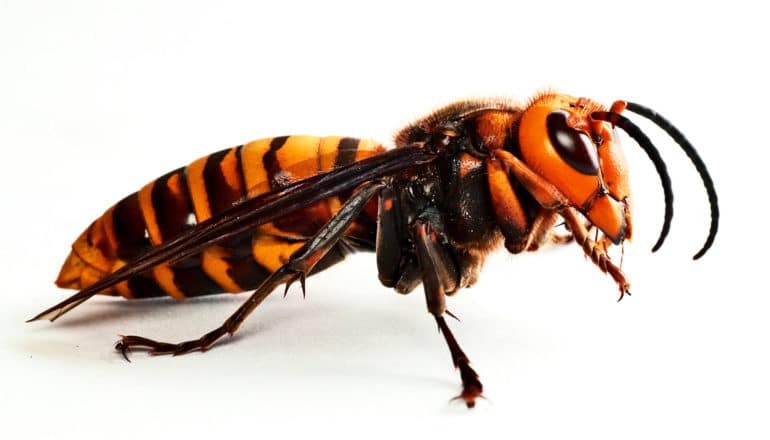
The Asian giant hornet (Vespa mandarinia) has triggered panic, but researchers report no sightings of the pest anywhere in North America except for the Pacific Northwest.
“The species has not yet been detected this spring and we do not expect them on the East Coast,” says Dina M. Fonseca, professor of entomology in the School of Environmental and Biological Sciences at Rutgers-New Brunswick and director of the Center for Vector Biology.
“We do not know how the species arrived in the United States but it is important to not overreact.”
Information from Washington State University confirmed the first US sighting of the Asian giant hornet in the wild. Researchers found the first specimens Nanaimo and White Rock, British Columbia, Canada in fall of 2019.
The Asian giant hornet aggressively attacks honeybees and can destroy entire honeybee colonies. Washington State University recently published an extensive fact sheet with identification and guidance for the public. They generally don’t act aggressively toward people, but may sting when threatened.
“The Asian giant hornet is unlikely to be present in New Jersey,” Fonseca says. “While citizens in the Pacific Northwest can help detect any emerging hornets this spring, which is critical for its control, the indiscriminate killing of bees, wasps, or other hornet lookalikes, would be detrimental because of beneficial roles these insects provide as plant pollinators and predators of agricultural pests.”
The Cicada killer wasp (Sphecius speciosus) looks similar and can be confused for the Asian giant hornet, researchers say. The large solitary wasps found throughout the US and burrow holes in the soil.
Even with their large size, dangerous appearance, and “dive-bombing” habit, adult Cicada killer wasps rarely come in contact with people and it is rare they will sting. The males of this species will make “dive-bombing” flight patterns, but do not have a stinger and an attack would not result in a sting.
The female’s tubular egg-laying structure on the rear end can function as a very weak stinger. Her mild sting mimics a slight pin scratch and most people don’t consider it painful. Rutgers Cooperative Extension has more information on the Cicada Killer Wasp and other bees and wasps.
As more information comes out regarding the Asian giant hornet, it is best to pay attention to confirmed sightings and how far the insect has spread.
It is most likely that reports of the first spread of the Asian giant hornet would come from surrounding areas bordering Washington state and British Columbia, Canada before any reports would occur on the East Coast.
Knowing this information may help to calm fears when seeing other hornets and wasps, researchers say. As always, take precautions and avoid contact with stinging insects.
Source: Rutgers University
The post Don’t panic about Asian giant hornets appeared first on Futurity.
from Futurity https://ift.tt/2YEfnEn
No comments:
Post a Comment